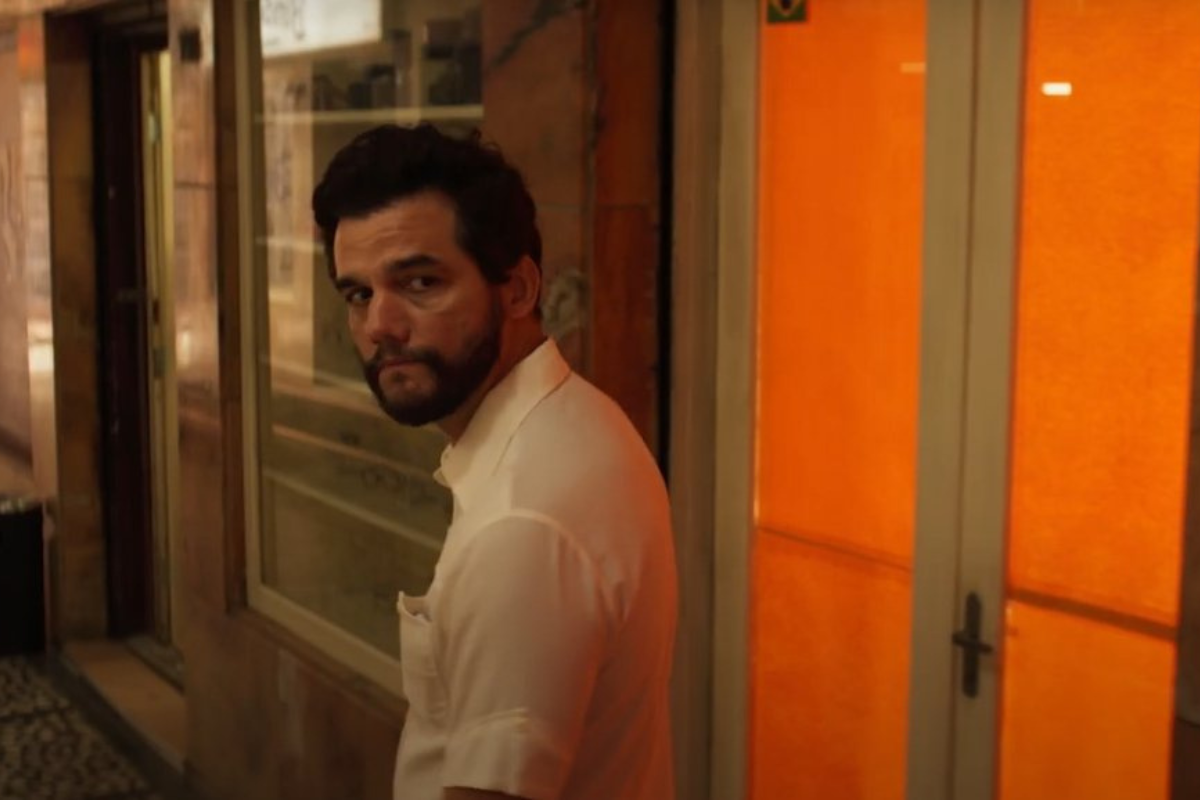Anatomy of a Premise Line: Q&A with Jeff Lyons
Script talked with Jeff Lyons about his new book for both screenwriters and novelists, Anatomy of a Premise Line, asking why he wrote it, what makes it different from other writing books, and his insights into creating compelling stories.
With so many screenwriting books out there, it's hard to know which will be a valuable tool and which will sit on your shelf and collect dust. Script talked with Jeff Lyons about his new book for both screenwriters and novelists, Anatomy of a Premise Line, asking why he wrote it, what makes it different from other writing books, and his insights into creating compelling stories.
Jeff Lyons is a published author with more than 25 year's experience in the film, television, and publishing industries as a writer, story development consultant, and story editor. He has worked with literally thousands of novelists and screenwriters, helping them build and tell better stories. Jeff is currently a freelance writer and story editor for Kensington Entertainment, Burbank, CA, as well as an instructor through Stanford University's Online Writer’s Studio. He is also a regular lecturer through the UCLA Extension Writers Program, and is a regular presenter at leading writing and entertainment industry trade conferences. See Jeff's site for his full bio.
Script: Why did you write this book? Does the world really need another book on how to write better?
Jeff Lyons: No, the world doesn’t need another book on how to write. The world has more than enough books on writing, the world is glutted and drowning in how-to-this and how-to-that, when it comes to writing craft. The world doesn’t need another book on writing. Which is great for my book, because it’s not a book on writing, or how to write, or what to write, or on anything related to writing. It is a book about story: how to develop a story, how to structure a story, and how to know if you even have a story. Anatomy of a Premise Line is a book about story development. Writing and storytelling are two different things and they have nothing to do with one another. They are different skills sets and require two different kinds of talents. You don’t have to have a pen or paper, word processor, or be anywhere near a written language of any kind to tell a story. Stories can be danced, mimed, painted, sculpted, or written, but stories don’t need writers. They only need storytellers. The problem is—and this is why I wrote this book—storytelling (i.e., story development) is not taught in MFA writing programs, or in film schools, or anywhere else, really. Writers are on their own, for the most part, in developing their story development skill sets. That’s the need this book fills: this book is the missing class you never got in that expensive MFA program, or film school.
Script: What makes Anatomy of a Premise Line different than all the other story development books out there?
JL: That’s just it, there aren’t a lot of story development books out there. In fact, there are almost no books on real story development in the marketplace. That’s one of the differentiators for sure between my book and other books, but the main differentiator is that Anatomy of a Premise Line teaches how to leverage something called a “premise line” to discover and uncover any story’s right, true and natural structure. Many writing books mention story premise in passing; some might even devote a whole chapter to the idea of “what is a premise,” but this is the only book devoted entirely to the subject of premise development and idea testing. This is the main differentiator between Anatomy of a Premise Line and all other books on story development (the few that are out there) in the marketplace. If a story is going to fail, it will first do so at the level of the idea itself, i.e., at the premise level. This book teaches writers how to master this invaluable tool and how to use it to uncover the perfect structure for any story. Every story has a structure; every story must have a structure. If it doesn’t, then it’s not a story, it’s something else. Anatomy of a Premise Line teaches any writer how to use that structure to build a map that can guide their entire writing process from inception to writing pages. By leveraging the power of the premise line, a storyteller can learn how to harness the natural structure of their story in one or two sentences. The book has many examples from the worlds of film and literature demonstrating how this works. I liken it to the old saying, “Give a man a fish and he eats for a night; teach a man to fish and he eats for a lifetime.” Anatomy of a Premise Line teaches you how to fish so you can create stories for your whole life, not just muddle through one night of writing with some flavor-of-the-month story technique.
Script: What is the biggest problem your book addresses for writers and storytellers?
JL:Anatomy of a Premise Line addresses the problem of, what I call, “premature writing.” Think about it, what happens when a writer gets a new idea for a story? They get excited, they chew on the idea a little while (very little), they get filled with anxiety because of the pressure to write something—anything—and they just start to write. This is, in fact, the consensus advice to writer, “Just write, don’t edit, don’t hold back, just do it—just write. The story will write itself—trust the process.” Well, for a few lucky souls this approach can work, the “just do it” strategy can produce some useful writing, but for the vast majority of writes this is horrible advice. Writers think that writing will get them where they want to go, but this is not what happens. Instead, after a few weeks, or months, and hundreds of pages they find themselves lost in the story woods wondering, “Where did the wheels go off the wagon?” The story isn’t working and they invariably have to backtrack to find their way again. I call this “backing into the story.” Everybody does it—everybody, without exception. That’s the main problem this book addresses, because when you are forced to back into your story you lose writing time, money, and creative energy struggling to get back on track and find your path again. This can be avoided completely! I’m on a mission to train writers to hold back from the urge to relieve their creative anxiety by starting pages before they know their story’s structure. Develop your story’s premise first, figure out the basic architecture, and develop your premise line; only then can you know if your story is going to work or fall flat. You can know right at the inception of your idea whether or not that idea will support a serious commitment by you as a writer. It can be done. You can avoid “premature writing” and getting lost in the story woods, if you let the premise development process guide you to the right, true, and natural structure of your story—BEFORE you start writing pages. The premise development process can literally cut your writing time in half by saving you from getting lost in the story woods, and providing a solid story map that can guide you thorough the entire writing process. This is not exaggeration, this is what I’ve seen happen with literally thousands of writers.
That’s the need this book fills: this book is the missing class you never got in that expensive MFA program, or film school.
Script: Is this book for screenwriters or novelists? How about creative nonfiction?
JL: Story is story; writing is writing. They are not the same thing. Remember, storytelling has nothing to do with writing. Writing is just one form a story can take, and whether that form is a haiku poem, or a screenplay, or a thousand-page novel is irrelevant. Certainly screenwriting and novel writing are very different activities, and each has its own peculiarities. But, Anatomy of a Premise Line is about story, not writing, so I don’t care (nor does the book) what kind of writer you are, in terms of your preferred format. All I care about is what kind of story you are telling, and have you discovered your story’s right, true, and natural structure. Consequently, the book makes no preference as to screenwriting, playwriting, novel writing or creative nonfiction; it’s for anyone who tells stories.
Script: What are some of your tips to make story a page-turner?
JL: The simple answer is: add a lot of car chases, monsters, space ships, super heroes, and flash-bang setpieces. People love the flash bang. That’s the easy answer. The complex answer, the answer that writers long for in everything they write, is to create characters with problems. People want to watch and read about characters who act badly. We all love stories where the characters make a mess of it, and in the process make life worse for everyone around them. Very human characters caught up the travails of living a life that constantly goes south—until it doesn’t. Because we also like to see them rise from the ashes, overcome the hopeless situation, and confidently move from underdog to overdog. Basically, if you want people to “turn the page,” or just sit in a chair and watch your movie, then tell a story about a character that is hopelessly human, and make this their greatest weakness and their greatest strength. Sure, add in the space ships, super heroes, and monsters, that’s all nice gravy, but audiences, be they readers or movie goers, will always respond to the all-to-human human that looks like them, talks like them, screws up like them, and ultimately wins like them. My book tells you how to find that all too rare, and oh so valuable human-human. Every story needs one, and when they are there—watch the pages turn.
Script: I really want to ask you about how you write. What sparks a story for you? Do you have rituals?
JL: The way I write is something I would not recommend to anyone. In fact, avoid my writing process at all cost. I do EVERYTHING the “writing advice” experts tell you not to do. Here is my ritual: get up, have coffee, feed the cat (so far so good), get on Facebook and spend an hour kibitzing, get on Twitter and check statistics and notifications and respond, get on LinkedIn and track all the mail/posts/messages, get on Stage 32 and respond to new contacts and review posts, write for a little while, check email, check Facebook again, check Twitter again, repeat. This is my day. I spend as much time on social media distracting myself as I do writing. I find this is necessary for me. I need distractions to write. It’s counter intuitive, but that’s what works for me. My day is from 8am to 12am pretty much every day, seven days a week. I’m writing and distracting myself all day long—literally. Run away from this as fast as you can and do not do this if you want a life. You have been warned. As to what sparks a story, who knows. I think it’s different for everyone. For me it’s a mix of my personal neurotic fears and dreams and wishes and obsessive desires. Right now I’m obsessed about the 11th century because I want to write a novel about that period, and I’m all wrapped up in the corruption of the Catholic Church and Popes, and kinky Cardinals and God only knows where that’s coming from inside my subconscious mind. But, it is, so I have to listen. What makes us write the things we write are all very much about us working out our own personal peccadilloes. So, somehow, right now, medieval Catholic perverts are my path to emotional self-healing. Go figure.
Script: What question should I have asked that I didn’t?
JL: “Chocolate or vanilla?” I still can’t decide.
Get Anatomy of a Premise Line at The Writers Store
Read more of Jeff's articles on Script.com
Follow Jeff on Twitter @Storygeeks
Top screenwriting and film publication, founded in 1989, published by Active Interest Media. Twitter: @scriptmag






